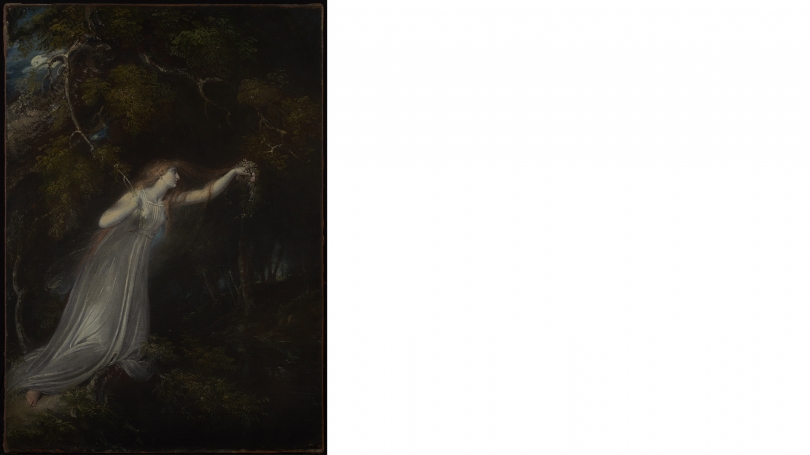This past spring, the museum received an important English eighteenth-century painting as a gift from longtime patrons and supporters Henry H. Erbe III, Class of 1984, and Margaret Trevisani Erbe, Tuck 1989. Ophelia depicts the ill-fated maiden in Shakespeare's tragedy Hamlet; it was commissioned by the British print publisher John Boydell as part of a project to promote English art through representations of scenes in the plays of its most famous dramatist. Boydell's grand vision for this project, which began in 1786 and ended seventeen years later, included a gallery that would display the paintings, an illustrated edition of Shakespeare's plays, and a folio of engravings after the paintings.
To ensure the success of this venture, Boydell approached established members of England's Royal Academy of Arts, such as Henry Fuseli, James Barry, George Romney, Benjamin West, and Angelica Kauffmann. One of the artists who participated was Richard Westall, a painter and illustrator who became an associate of the Royal Academy in 1792 (just a year before this work was executed) and a full member in 1794.
In his painting, Westall chose to show Ophelia in act IV, scene vii, as she reaches out to hang a garland on a branch, prior to her death by drowning in the river. The queen, who brings the news of her death, describes the scene:
There is a willow grows aslant a brook,
That shows his hoar leaves in the glassy stream;
Therewith fantastic garlands did she make
Of crow-flowers, nettles, daisies, and long purples
That liberal shepherds give a grosser name,
But our cold maids do dead men's fingers call them:
There, on the pendent boughs her coronet weeds
Clambering to hang, an envious sliver broke;
When down her weedy trophies and herself
Fell in the weeping brook.
Ophelia will be an important work for the museum's teaching of the history of British art, and it provides a fascinating link to a unique moment in the history of artistic entrepreneurship. In addition, it joins a number of works in the collection that draw on the accomplishments of Shakespeare, including a set of lithographs by the nineteenth-century French artist Eugène Delacroix that also focuses on scenes from Hamlet.
